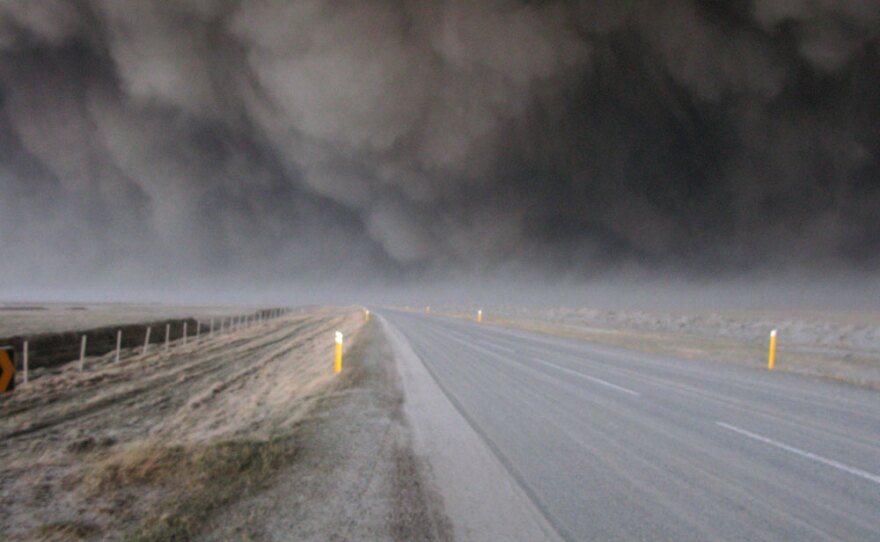
To understand a volcanic eruption, you can study images from satellites, radar measurements from aircraft, or seismic data from sensors in the ground. But if you really want to know what's up with a volcano, you need to sample the material it's spewing out.
Volcanologists Evgenia Ilyinskaya and Asgerdur Sigurdardottir were determined to do just that. After stopping for some last-minute supplies in Hvolsvollur, Iceland, the pair set out in a gray Isuzu Trooper headed for the giant clouds coming from the Eyjafjallajokull volcano.
The afternoon was unusually clear, making the view of Eyjafjallajokull stunning as the car drew closer. Most of the sky was brilliant blue, with just a few wispy white clouds. But dead ahead, a dark curtain hung before the car.
Huge white plumes of water vapor sat above ominous clouds of volcanic ash. As their car reached the edge of the plume, the sky turned gray.
Ilyinskaya and Sigurdardottir were out to gather the ash that had drifted to the earth after erupting into the sky. It's the ash that's causing problems for air travelers around Europe; the little particles can gum up aircraft engines and disable planes.
But the ash can also teach scientists what kind of magma is contributing to the eruption, and that, in turn, can provide information about how long the eruption will last and how dangerous it can be.
Inside the plume, the wind was blowing extremely hard. Miniature tornadoes called dust devils flung ash that had already collected on the ground back into the sky.
They stopped along the road, and the two scientists pulled on their yellow gas masks before stepping outside to collect samples.

Ilyinskaya took a small pump, attached it to a fence post with tape and switched it on. The pump drew air through a paper filter to trap gases coming from the volcano. Volcanic gases could also pose an environmental danger; fluoride gas coming from other volcanoes has caused devastating damage to people and livestock in the past.
Sigurdardottir walked down to a small bridge next to the car and started sweeping dust into a gallon-sized Ziploc bag.
They continued deeper into the plume, taking more samples. In one spot, they could see the sun through the cloud. The view allowed Ilyinskaya to measure the size of the particles in the plume and their density.
The volcano rumbled as Ilyinskaya and Sigurdardottir climbed back into their Trooper and drove away. Both researchers were covered in a fine powder resembling flour -- more ash from their trip. The ash that returned with them in baggies will go to the lab. What it may tell them isn't clear yet, but they hope to find answers in the coming days.
Copyright 2022 NPR. To see more, visit https://www.npr.org. 9(MDAzMjM2NDYzMDEyMzc1Njk5NjAxNzY3OQ001))







